
European Journal of Medicinal Chemistry Reports
Scope & Guideline
Highlighting emerging trends in medicinal chemistry research.
Introduction
Aims and Scopes
- Medicinal Chemistry Research:
The journal primarily aims to publish cutting-edge research in medicinal chemistry, including the design, synthesis, and evaluation of new chemical entities with therapeutic potential. - Drug Discovery and Development:
A significant focus is on the drug discovery process, including in vitro and in vivo studies, structure-activity relationship (SAR) analyses, and the development of novel drug delivery systems. - Natural Products and Phytochemistry:
The journal explores the medicinal properties of natural products, including the isolation and characterization of bioactive compounds and their potential therapeutic applications. - Nanotechnology in Medicine:
There is a strong emphasis on the application of nanotechnology for drug delivery, enhancing the efficacy and targeting of therapeutic agents. - Biological Evaluations and Mechanistic Studies:
Research articles often include extensive biological evaluations, mechanistic insights, and computational modeling studies to understand drug interactions and effects. - Emerging Therapies and Innovations:
The journal highlights emerging therapeutic strategies, including the use of novel chemical scaffolds and innovative approaches to combat drug resistance in various diseases.
Trending and Emerging
- Targeted Drug Delivery Systems:
There is an increasing focus on the development of targeted drug delivery systems, particularly utilizing nanotechnology to enhance the specificity and efficacy of therapeutic agents. - Natural Products and Bioactive Compounds:
Research on natural products and their derivatives is gaining traction, highlighting their potential in drug discovery and development, particularly in addressing complex diseases. - Multi-target Approaches in Drug Design:
The trend towards multi-target drug design is emerging, with researchers exploring compounds that can interact with multiple biological targets to improve therapeutic outcomes. - Artificial Intelligence and Machine Learning in Drug Discovery:
The integration of artificial intelligence (AI) and machine learning (ML) techniques in the drug discovery process is on the rise, aiming to streamline the identification of lead compounds and optimize drug properties. - Focus on Antimicrobial Resistance:
Research addressing antimicrobial resistance is becoming increasingly prominent, focusing on novel compounds and strategies to combat resistant pathogens. - Therapeutic Applications of Nanomedicine:
The therapeutic applications of nanomedicine are expanding, with a growing number of studies investigating the use of nanomaterials for enhanced drug delivery and efficacy in various diseases.
Declining or Waning
- Traditional Synthetic Methods:
There has been a noticeable decrease in publications focusing solely on traditional synthetic methodologies, as the field increasingly embraces more innovative and efficient synthetic strategies. - General Reviews without Novel Insights:
The frequency of general review articles that do not provide new insights or comprehensive analyses has diminished, suggesting a preference for more specialized and detailed reviews. - Studies on Established Drug Classes:
Research focusing on established drug classes with limited innovation or new findings is becoming less prominent, as the journal emphasizes novel therapeutic approaches and new drug discovery. - Basic Pharmacology Studies:
There is a waning interest in basic pharmacology studies that do not integrate advanced methodologies or translational aspects, as the journal seeks to publish research with direct clinical relevance.
Similar Journals

International Journal of Pharmaceutical Investigation
Fostering Dialogue on Cutting-Edge Pharmaceutical PracticesInternational Journal of Pharmaceutical Investigation, published by INPHARM ASSOC, PHCOG NET, is a premier platform dedicated to advancing the field of pharmaceutical sciences. With the ISSN 2230-973X and E-ISSN 2230-9713, this journal serves as a vital resource for researchers, professionals, and students focused on drug development, formulation, and efficacy. By fostering a rich discourse on innovative pharmaceutical practices and research breakthroughs, the journal plays a critical role in enhancing global health outcomes through groundbreaking scholarly work. The absence of open access allows for selective dissemination of high-quality content, promoting rigorous peer-review processes that uphold academic integrity. Featuring articles that span a diverse range of topics within pharmaceutical sciences, the International Journal of Pharmaceutical Investigation is committed to supporting the ongoing evolution of this dynamic field, making it an essential read for anyone engaged in pharmaceutical research and development.
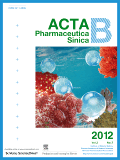
Acta Pharmaceutica Sinica B
Championing Excellence in Pharmaceutical ResearchActa Pharmaceutica Sinica B is a prestigious open access journal that has been setting the standard in the field of pharmacology, toxicology, and pharmaceutics since its establishment in 2011. Published by the Institute of Materia Medica, Chinese Academy of Medical Sciences, the journal serves as a vital platform for researchers, professionals, and students seeking to disseminate innovative findings in drug development, pharmaceutical sciences, and therapeutic applications. With an impressive impact factor reflecting its high academic quality, Acta Pharmaceutica Sinica B has achieved Q1 status in the category of Pharmacology, Toxicology and Pharmaceutics as of 2023, ranking #1 out of 80 journals in General Pharmacology. This journal not only focuses on the latest advancements in drug research and formulation but also emphasizes interdisciplinary approaches, fostering collaborations that span various scientific domains. The accessible nature of the journal, combined with its rigorous peer-review process, ensures that crucial insights and breakthroughs reach a global audience swiftly and effectively. For those looking to stay at the forefront of pharmaceutical research, Acta Pharmaceutica Sinica B is an indispensable resource.
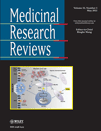
MEDICINAL RESEARCH REVIEWS
Driving Excellence in Molecular Medicine ResearchMEDICINAL RESEARCH REVIEWS, published by Wiley, is a leading journal in the fields of Drug Discovery, Molecular Medicine, and Pharmacology. With an impressive impact factor and esteemed standing in its category quartiles (Q1 in all three fields), this journal serves as a vital platform for the dissemination of cutting-edge research and reviews that drive innovation in therapeutic development and molecular health sciences. Since its inception in 1981, MEDICINAL RESEARCH REVIEWS has garnered a robust readership within the scientific community, underscored by its high rankings in Scopus – where it ranks #3 in Pharmacology and #2 in Drug Discovery, placing it within the top echelons of academic influence. Researchers, professionals, and students alike benefit from its rich content and comprehensive approaches to tackling complex medicinal challenges, making it an essential resource for those invested in advancing the frontiers of biomedical research.
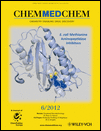
ChemMedChem
Transforming research into therapeutic solutions.ChemMedChem is a leading international journal published by WILEY-V C H VERLAG GMBH in the United Kingdom, specializing in the interdisciplinary fields of medicinal chemistry and drug discovery. With a commendable impact factor that places it in the Q1 quartile for Organic Chemistry and among the Q2 ranks in several other key categories including Biochemistry, Molecular Medicine, and Pharmacology, ChemMedChem serves as a vital platform for the dissemination of innovative research and transformative insights in the development of pharmaceutical agents. Since its inception in 2006, this journal has been at the forefront of advancing knowledge that bridges the gap between fundamental research and practical applications in medicine, making it an essential resource for researchers, professionals, and students alike. Although it currently does not offer Open Access options, the journal ensures high-quality peer-reviewed content that engages its audience and fosters collaborative scientific discourse.
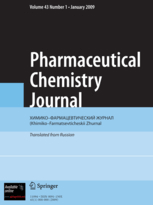
PHARMACEUTICAL CHEMISTRY JOURNAL
Advancing Drug Discovery Through Scholarly Excellence.Pharmaceutical Chemistry Journal is a pivotal publication in the field of pharmaceutical sciences, renowned for its in-depth articles and research findings. Published by Springer in the United States, this journal provides a crucial platform for researchers, students, and professionals dedicated to advancing drug discovery and pharmacology. With an ISSN of 0091-150X and an E-ISSN of 1573-9031, this journal has consistently aimed to promote scholarly communication and innovation within its scope since its inception in 1967. Despite its current Category Quartiles ranking of Q4 in both Drug Discovery and Pharmacology, the journal remains a valuable resource for disseminating new ideas and findings that contribute to the scientific community. Researchers benefit from the journal's commitment to high-quality peer-reviewed content, even in an environment where open access options are currently not available. As the field evolves, the Pharmaceutical Chemistry Journal continues to play an important role in shaping future advancements in drug development and safety.

Records of Natural Products
Advancing Discoveries in Natural Product ScienceRecords of Natural Products is a distinguished journal focused on the dynamic fields of Drug Discovery, Organic Chemistry, Pharmacology, and Plant Science. Published by ACG PUBLICATIONS in Turkey, this journal serves as a vital platform for disseminating innovative research findings and advancements in natural product studies. With its convergence spanning from 2009 to 2024, Records of Natural Products holds a commendable position in the academic realm, featuring a 2023 Q3 ranking in Drug Discovery and Organic Chemistry, alongside a notable Q2 ranking in Plant Science. Despite its current lack of open access, the journal is committed to providing quality content that enriches the understanding of natural products and their potential applications. Researchers and professionals alike can benefit from the journal's insights, which not only contribute to scientific knowledge but also facilitate advancements in pharmaceuticals and sustainable practices. By exploring the rich tapestry of natural product research, this journal underscores its importance as a leading resource for professionals dedicated to enhancing the efficacy and application of natural compounds.
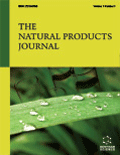
Natural Products Journal
Harnessing Nature's Power for Drug Discovery and WellnessNatural Products Journal, a leading publication by Bentham Science Publishers, primarily focuses on the rapidly evolving field of Natural Products and their applications in Complementary and Alternative Medicine as well as Drug Discovery. With an ISSN of 2210-3155 and an E-ISSN of 2210-3163, this journal serves as an essential platform for researchers, professionals, and students dedicated to exploring the critical role of natural compounds in health and medicine. Since its inception in 2011, it has consolidated its reputation, achieving a Q3 ranking in Complementary and Alternative Medicine and a Q4 ranking in Drug Discovery as of 2023, illustrating its growing influence within the academic community. Although it currently does not operate as an Open Access journal, it remains a vital resource for cutting-edge research and developments in natural products, offering insightful contributions that pave the way for innovative therapeutic strategies. Located in the Netherlands, the journal is pivotal for those looking to stay at the forefront of research in natural substances and their multifaceted applications.

Fitoterapia
Pioneering Discoveries in Herbal MedicineFitoterapia is a prestigious journal published by Elsevier that specializes in the fields of drug discovery and pharmacology. Established in 1948 and featuring a comprehensive scope that encompasses all aspects of medicinal plants and their derivatives, this journal is a critical resource for researchers, professionals, and students interested in the pharmacological effects of natural products. With an impressive impact factor reflected in its Q2 ranking in both Drug Discovery and Medicine as well as a Q3 ranking in Pharmacology, Fitoterapia plays a vital role in promoting innovative research in the intersection of traditional medicine and modern pharmacological science. The journal’s commitment to quality is further highlighted by its rankings in Scopus, where it holds a notable position among peers in its field. Although Fitoterapia does not currently offer Open Access, its reputation for rigor and relevance makes it an indispensable asset for anyone engaged in herbal medicine research and development. Authors and researchers seeking to publish groundbreaking findings will find a welcoming platform to disseminate their work in this influential journal.
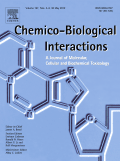
CHEMICO-BIOLOGICAL INTERACTIONS
Bridging Disciplines to Enhance Public SafetyCHEMICO-BIOLOGICAL INTERACTIONS is a premier journal published by Elsevier Ireland Ltd, dedicated to advancing the field of chemical and biological interactions since its inception in 1969. With a robust focus on pharmacology and toxicology, the journal holds a prestigious Q1 ranking in both Medicine (miscellaneous) and Toxicology, reflecting its significance in disseminating influential research. As part of the Scopus database, it ranks #21 out of 133 journals in Toxicology, positioning it in the 84th percentile and ensuring high visibility for cutting-edge studies. This scholarly platform serves as a crucial resource for researchers, professionals, and students who seek reliable and innovative findings at the intersection of chemistry and biology. While currently not open access, CHEMICO-BIOLOGICAL INTERACTIONS provides a comprehensive collection of articles that contribute to the ongoing dialogue in toxin research and its implications on medicinal chemistry, thereby fostering advancements in public health and safety.

CHEMISTRY LETTERS
Exploring pivotal developments in the world of chemistry.Chemistry Letters, published by the Chemical Society of Japan, is a distinguished academic journal that focuses on pivotal developments in the field of chemistry. Since its inception in 1973, the journal has been a vital platform for the dissemination of novel research findings across various sub-disciplines, encompassing both theoretical advancements and practical applications. As a testament to its significance in the community, Chemistry Letters has achieved a Category Quartile of Q2 in the 2023 ranking for miscellaneous Chemistry journals, reflecting its respected position among peers. Although it does not offer Open Access, the journal remains accessible through institutional subscriptions, thus ensuring a wide reach for its valuable content. With an active scope ranging from general chemistry topics to specialized studies, it is ideal for researchers, professionals, and students alike who seek to contribute to and expand their knowledge within this dynamic field. The journal continuously aims to promote excellence in chemical research, facilitating dialogue and collaboration among chemists worldwide.